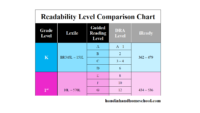Phonological Awareness
Phonological Awareness includes a broad set of skills that identify and manipulate sounds in oral language. Because no print or text is involved, you can think of phonological awareness as pre-reading skills.
Teaching Phonological Awareness begins with introducing children to the idea of Phonemes. Phonemes are the basic units of sound a language makes. While we have 26 letters of the American alphabet, we have about 44 phonemic sounds that we use to create hundreds of thousands of words.
5 Steps to Learning to Read:
- Phonological Awareness
- Phonics
- Fluency
- Vocabulary Development
- Reading Comprehension
Basic Phonological Awareness Skills Include:
- Rhyming words
What rhymes with whale: tail or tack?
- Categorization
Which first sound does not belong: bus, bun, rug?
- Blending
What word is /d/ /a/ /d/?
- Segmentation
How many sounds do you hear in “bike” – /b/ /i/ /k/- “bike”?
- Identification
What sound do you hear at the beginning of the word: dig?
- Deletion
Listen to this word: mat.: Take away the /m/ sound. What word do you have left?
- Substitution
Listen to this word: pen. Take away /e/. Add /a/. What word do you have now?
- Insertion
Listen to this word: crack. Add /er/ to the end of crack. What word do you have now?
Teaching Phonological Awareness
When teaching Phonological Awareness, keep your activities to no more than 10 minutes per day, twice a day. You are building a foundation for reading, so you want to take your time to create strong, firmly rooted skills within your child.
The list of Phonological Awareness skills goes from simple to complex. Generally speaking, each basic skill has three components: Mastering the skill with the word’s initial sound – the final sound – and the medial (or middle) sound. Your goal is to help your child learn how to identify and manipulate sounds. It lays the foundation for being able to blend sounds together, once you introduce phonics. While it’s tempting to jump ahead from Phonemic Identification of initial sounds to Phonemic Substitution of medial sounds, you would actually be skipping a number of critical skills embedded at each level.
Phonological Awareness is an oral language skill. Teaching Phonological Awareness does not involve books or even worksheets. The activities can be easily incorporated throughout the day while you’re driving, going for a walk, or even preparing dinner. The more you approach teaching Phonological Awareness skills as a game, the more likely your child will internalize that reading is something fun you do throughout your day.
Some reading workbooks will practice Phonological Awareness skills with pictures to help cue a kid into thinking of the name of a word. That can be a fun way for a child to practice independent work, but it can also be frustrating if your child has trouble identifying what the picture represents. For example, is a picture of an airplane meant to be “read” as the word “plane” or “fly”.
Remember: Once you introduce written letters and words into your teaching, you have now made the activity a Phonics lesson.
Last modified on September 5, 2023




